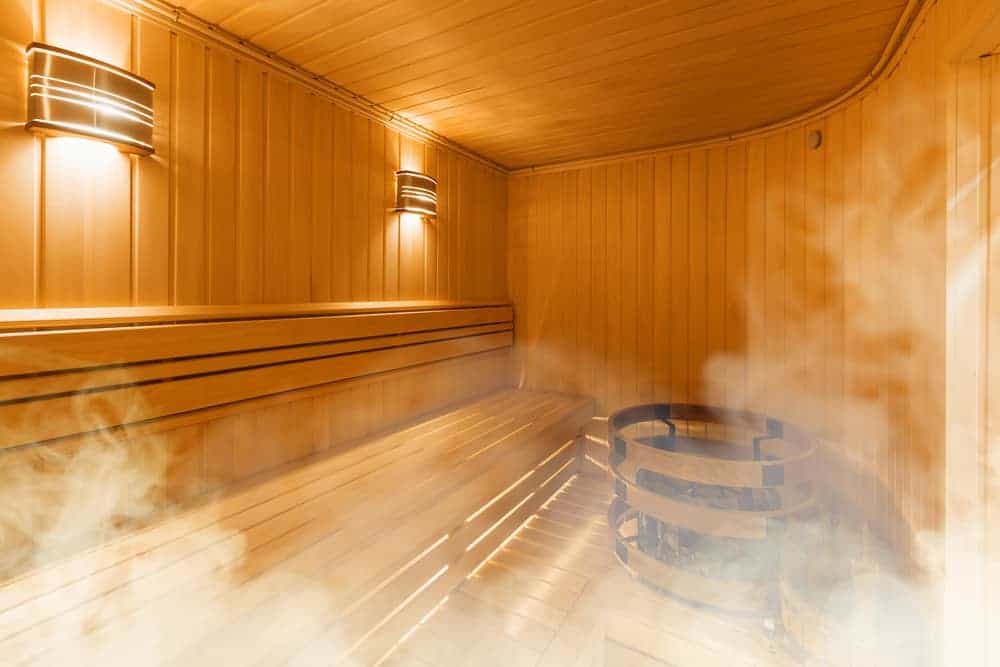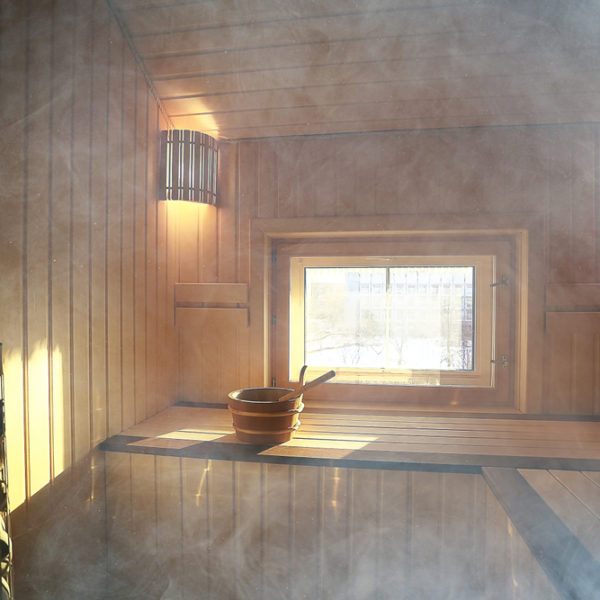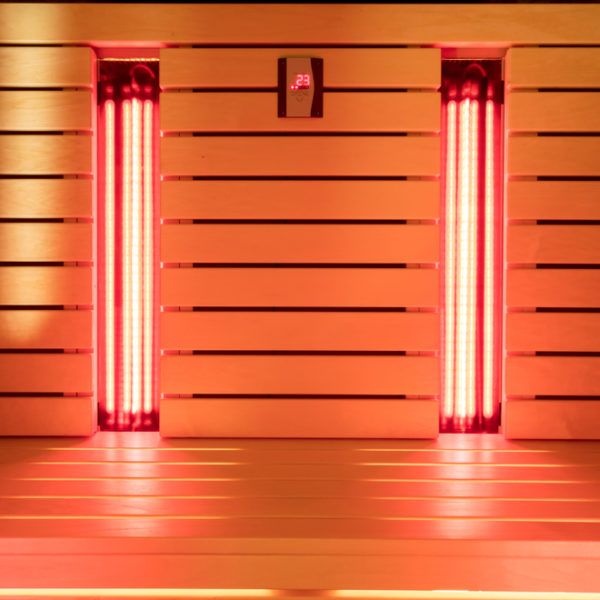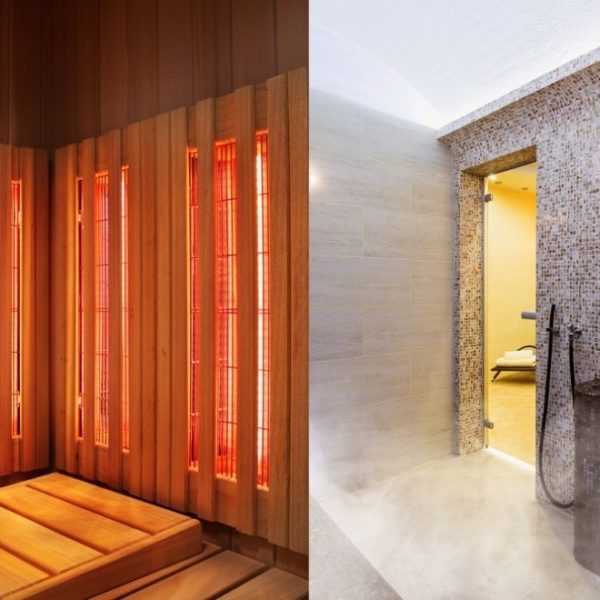Did you know that many practitioners recommend multiple visits to a spa or sauna to reap the many benefits associated with heat therapy?
Well, that’s because heat therapy is scientifically proven to provide a range of therapeutic benefits to one’s body.
Today, let’s explore the similarities and differences between steam rooms and saunas.
What is Steam Room?
Steam rooms depend on an external steam generator to boil water into steam. The steam then channels into the room through an inlet valve. The construction of the steam room must prevent moisture from escaping the room, thus creating a 100 percent humid environment.
Although steam rooms have less clinical research backing their effectiveness, the heat therapy industry promotes these warm spaces as a treatment option for dry skin, acute and chronic pain, and sporting injuries.
What is Sauna?
The Finnish culture prides itself on the origin of the sauna. Traditionally, the sauna space uses convection to transfer heat from a pile of warmed rocks to the rest of the room.
You can use a ladle to carefully pour water over the sauna rocks, producing steam as if you had just stepped out of a hot shower. Although this will generate some humidity, its levels will never reach those of a steam room.
Steam Room vs. Sauna – Types
Saunas use various technologies to generate heat into their dedicated spaces. For example, the classic Finnish sauna makes use of the kiulu (sauna pail) and loylykauha (steam ladle) to create the timeless appeal of an age-old pastime.
I would personally love to experience a Finnish sauna in its rawest form, the savusauna (smoke sauna), but that may not be your particular preference.
If not, you may opt between a modern wood-burning, electric, gas, or infrared-heated sauna. No matter your choice, you will surely leave the sauna feeling relaxed, refreshed, and rejuvenated.
Steam rooms come standard outside of their various applications. For example, a steam room is generally fitted for mid-size and large applications, whereas you may choose to retrofit your shower with a steam function enabling a similar effect. You may even select to install a sauna-shower combination that will completely revolutionize your bathroom.
Steam Room vs. Sauna – Temperature
With the many varieties of sauna heaters available, the operating temperature range varies from 110 degrees to 200 degrees Fahrenheit. Typically, steam saunas generate heat using a wood-burning, electric, or gas heater operate at much higher temperatures due to their method for transferring heat- convection.
With a wood-burning stove, heat control is an inexact science, as it depends on the type and how much wood you choose to burn. However, electric and gas-heated stoves are much easier to regulate with the touch of a control panel.
Infrared saunas, which utilize radiant technology to transfer heat, are prized at offering longer sessions due to their lower operating temperature. Generally, infrared saunas operate between 110 degrees and 140 degrees Fahrenheit.
Steam rooms are specifically rated to operate between 110 degrees and 114 degrees Fahrenheit. However, due to a 100 percent humidity rate, you will tend to feel much hotter even at this lower temperature. This tendency exists because the moisture concentration in the room disables your sweats ability to evaporate.
Steam Room vs. Sauna – Materials
The design and construction of saunas and steam rooms differ significantly. Typically luxury softwood outfits a traditional sauna. In addition to its elegance, wood is the most functional material for these spaces.
Not only is wood able to pull moisture from the air helping to maintain low humidity levels, but it remains cool to the touch.
Steam rooms need to be waterproof to prevent the escape of moisture. The nature of a steam room requires 100 percent humidity as a constant. Continuous exposure to this high level of humidity would eventually break down the wood’s properties.
So instead of wood, manufacturers use various waterproof materials such as tile, stone, glass, or acrylic to construct a steam bath.
Steam Room vs. Sauna – Costs
An in-home sauna installed costs on average between $3000 and $10,000. Consider that installation costs alone range between $300 and $2500. In addition, these average prices cover a variety of standard-size installations.
Ceiling height usually is no higher than seven feet to prevent heat loss. For your consideration, a standard-size sauna will comfortably seat four people in a six feet by six feet space.
Unless you are DIY savvy and have access to quality discounted materials, the less expensive alternative for a sauna package installed and ready-to-go will be if you shop for an indoor prefabricated model. Most times, you can install one of these units within hours of opening the package.
Steam rooms cost on average between $2000 to $5000. It is worth considering a professional contractor to install the steam-generating unit because the tank contains pressurized steam. The installation alone will cost you a pretty penny, but I can’t stress enough the importance of having this setup installed adequately.
Steam rooms typically need a dedicated space for installation; however, today’s market offers various sauna-shower combinations that could fit your current shower space.
Steam Room vs. Sauna – Installation
Sauna and steam room installation are very different altogether. Whereas a sauna can take up a relatively small space in your home, steam rooms require a larger space and a dedicated drain.
Saunas only require an electric hookup, and if you are DIY-savvy, you can save money by performing the electrical work yourself. In addition, if you choose to install an infrared sauna, no heater is required, making the process much easier.
Steam rooms will require the expertise of both an electrician and a plumber. In addition, adequate drainage, sealing, and careful steam generator installation are critical to this enclosure.
If you are remodeling your bathroom, you have the option to purchase a sauna-shower combination which will be a fairly pricey investment. “Several characteristics make steam showers unique, including a seat, watertight seal, sloped ceiling, and a ceiling height of no more than eight feet.”
Steam Room vs. Sauna – Health Benefits
Saunas produce a range of beneficial results through their coveted heat+sweat therapy; this remains true regardless of the heating technology used.
And whether the sauna operates through convection or radiation, the personal benefits garnered have been known to affect both topical and more profound conditions alike positively.
- stress relief, relaxation, and sleep improvement
- promotes mindfulness and stimulates mental health
- lowers inflammation and offers chronic pain relief
- improves cardiovascular health and easier breathing
- increases fitness performance and promotes muscle recovery
- leaves skin looking healthier through sweat detox
- enhanced weight loss and increased metabolism
- increases blood flow for better circulation
- promotes a healthy balance of blood vessels
- stimulates immune system that helps defend against toxins and other bacteria
- relieves congestion for those experiencing sinus conditions
- improves congestive heart failure and peripheral artery disease (as found in Japanese therapy literature)
In my opinion, NASA-led medical research grants the upper hand to infrared technology. And because there is no humidity associated with the therapy, heat directly penetrates your skin.
Infrared waves travel in straight lines and operate between the infrared portion of the electromagnetic spectrum. This range is invisible to the human eye; thus, we feel it in heat form.
We can divide the infrared range into three distinct groups: far, mid, and near-infrared.
Near-infrared, by far the shortest wavelength is absorbed right below your skin surface, promoting skin cell regeneration and revitalization.
Mid-infrared, are longer than near-infrared wavelengths and are effective at improving your circulation and increasing healing times.
Far-infrared, the longest wavelength, penetrates the deepest and is best adapted for weight loss, detoxification, and increased blood flow.
Within the research community, scientists indicate that the specific infrared region between 810 and 830 nanometers directly affects ATP production.
ATP is a carrier for synthesized energy housed within the mitochondria of our cells. The effects of this range penetrate even deeper below the skin, which promotes wound healing and other regenerative properties.
Steam rooms mimic their ancient acclaim to fame. These steam-generating facilities originate from the times of Ancient Rome, Greece, and Turkey. They were often housed in incredibly ornate structures and ritually used as a means to pay homage to their gods.
Nowadays, fitness and leisure centers usually provide a steam room to members wanting to take advantage of this post-fitness therapy.
Steam Room vs. Sauna – Sleeping
You will surely experience a blissful state of relaxation with either option. Saunas and steam rooms alike are known to affect the sleep centers of our brains, so after a therapy session, you are likely to experience a night of deep sleep.
While you are in the enclosure, sleepiness could become dangerous because you are susceptible to heat overexposure. Thankfully, most modern units come equipped with a range of safety features to turn off after a preset time. Another option may be to carry a loud but inexpensive timer into the space with you to prevent this from happening.
Steam Room vs. Sauna – Health Risks
The moderate use of the sauna is safe for most people; however, if you suffer from cardiovascular disease, you should speak first with your doctor. And if you take regular medications, have a known medical illness, or are pregnant, you should consult with your specialist.
Except for careful consideration of these special risk groups, research indicates that sauna use is a generally safe therapy. And for this reason, people with physically inhibiting conditions especially enjoy taking regular trips to the sauna.
Contrary to popular belief that a sauna session will lower blood pressure, studies indicate that blood pressure rises in individuals. What is fascinating is the come-down effect on an individual’s cardiovascular system after the session is over.
You may have heard that a sauna session is similar to running a half-marathon. But although one’s heart rate experiences similar positive effects of exercising, the lack of muscle activity detracts from that full-body workout effect.
Steam rooms also host a list of potential benefits. Like sauna safety, the particular risk groups need to obtain medical clearance before venturing out to their local day spa or wellness center.
Medical advisors also recommend that steam room use be limited to fifteen-minute sessions to avoid the risk of dehydration. Another consideration worth mentioning, especially in these times of a global epidemic, is that steam rooms can also “host other people’s germs.” How? Because the steam is not hot enough to kill certain bacteria.
TIP: To avoid adverse effects of either sauna or steam room use, please follow the following advice:
- avoid alcohol consumption before visiting the sauna
- limit sessions to 15-20 minutes in duration
- an adult should always accompany young children
- stay hydrated throughout your visit to the sauna
- remove all jewelry and dress appropriately
- rest afterward so your body can efficiently regulate itself
- take a cool shower to remove sweat and other foreign materials
Steam Room vs. Sauna – Resale Value
If you are like me, you may be a very private person, and it may not be easy to fully unwind and relax if you are sharing a sauna with others. This fact alone may make purchasing a sauna a worthwhile investment.
Sauna ownership boils down to personal preferences, but having unlimited access to a sauna may give you the time to enjoy those weekly sessions without worrying about traffic, time commitments, and monthly membership fees.
The addition of either a sauna or steam room to your home has the potential to increase your home value. The catch is whether or not an interested homebuyer shares and expresses the same level of interest in the spa-like feature.
Steam Room vs. Sauna – Worth Mentioning
Suppose your experience with either a sauna or steam room has left you in a state of homeowner bliss and have so decided to proceed with searching the market for a reputable dealer. In that case, I recommend starting with The North American Sauna Society.
Once your home has been fitted with your luxury space, and you decide to invite others to experience your home spa, please make sure you first discuss with them the benefits and medical concerns that exist.
Conclusion
There are similarities yet significant differences between the various types of saunas available and steam rooms. However, either alternative provides rest, relaxation, and rejuvenation.
I encourage you to consider experiencing the blissful effects of both setups and make up your mind as to whether you prefer the dry heat of a sauna or the high-humidity environment of a steam room.
Would you mind commenting below with any questions or concerns regarding the various types of heat therapy available?










